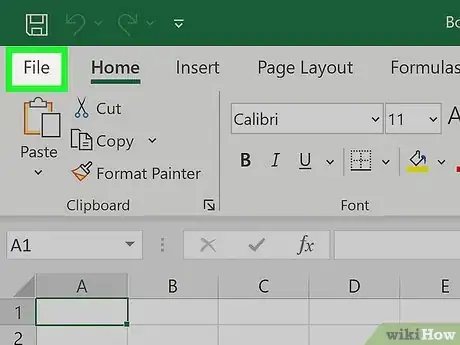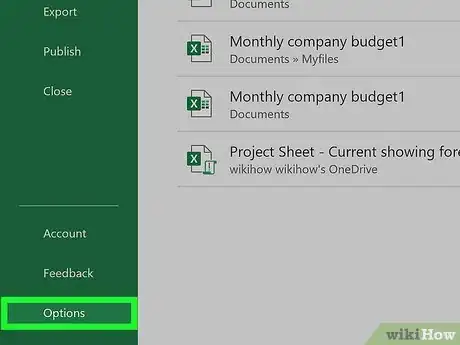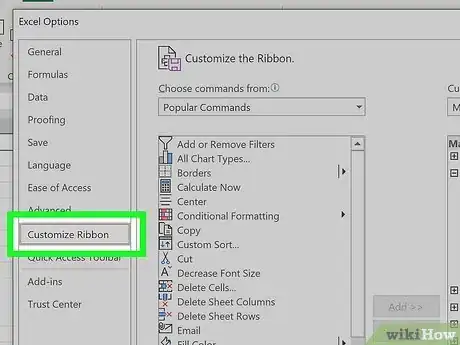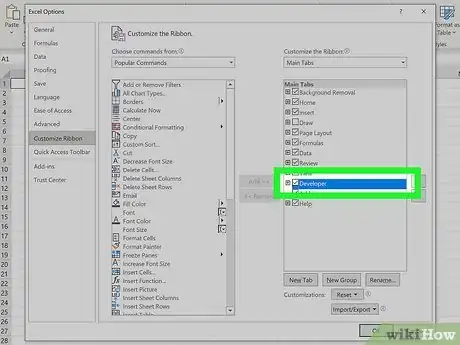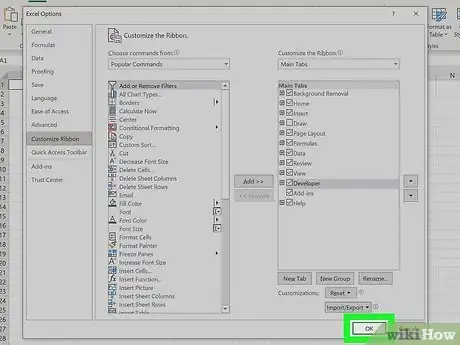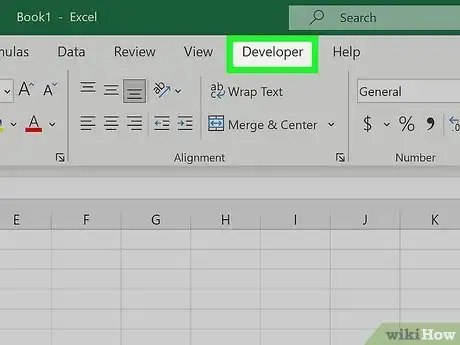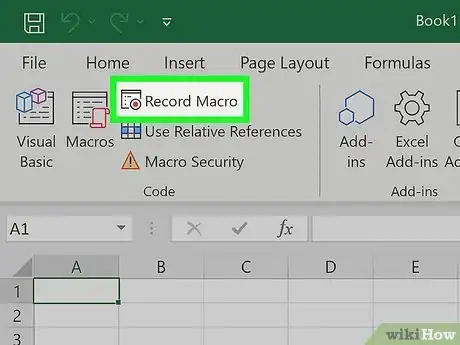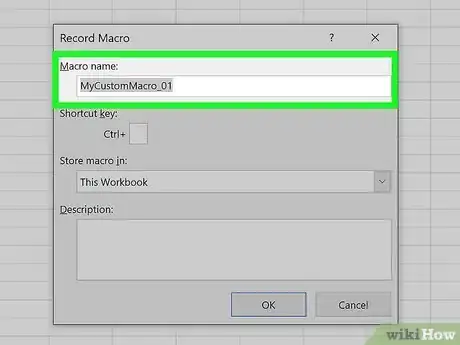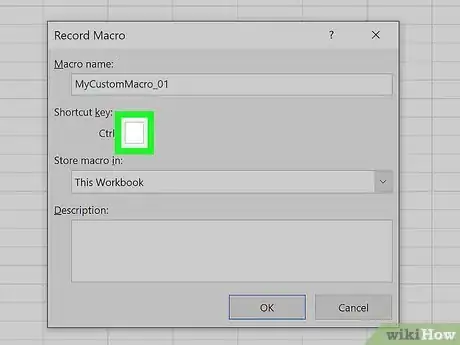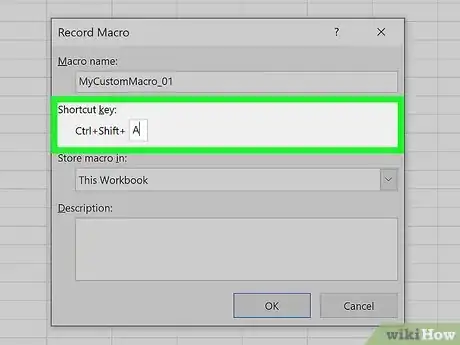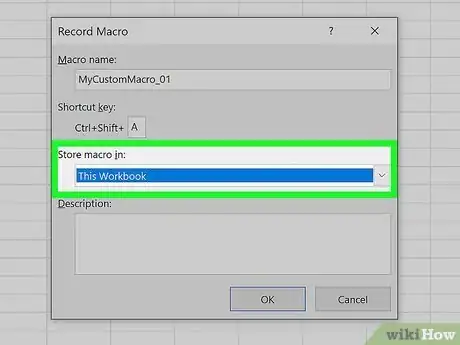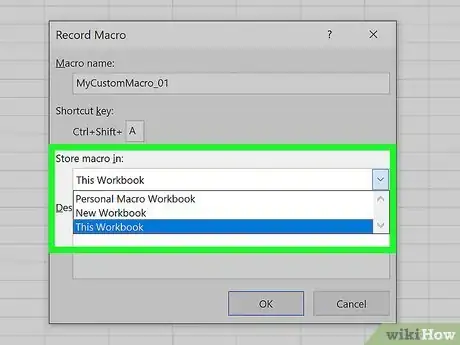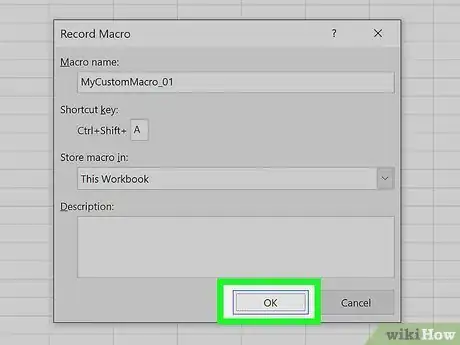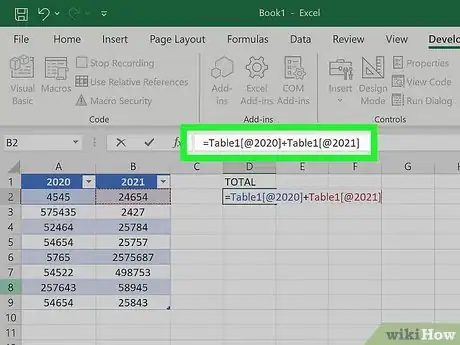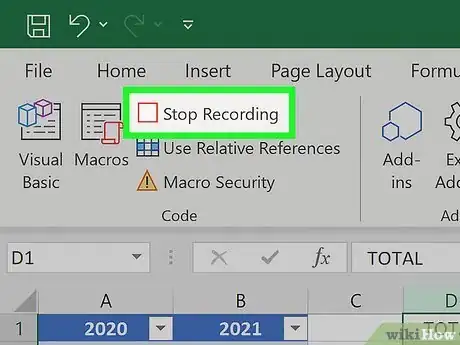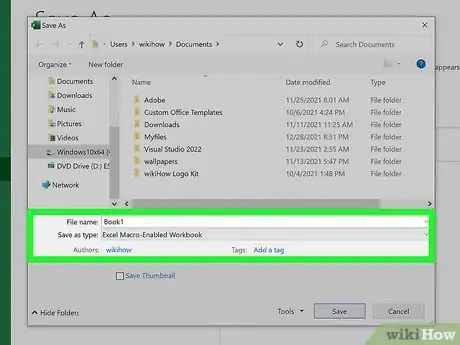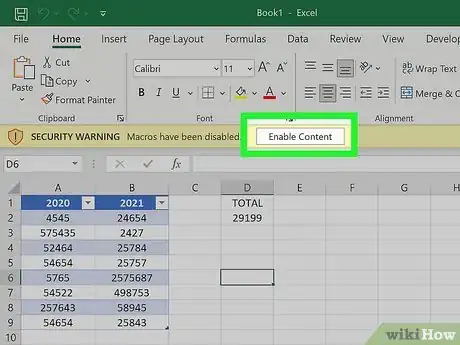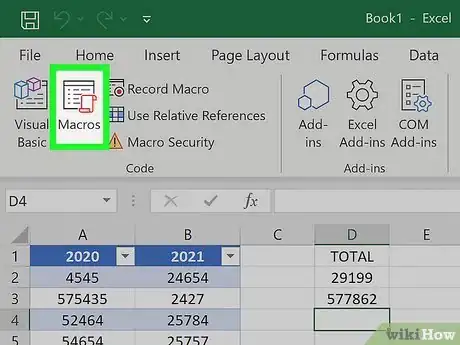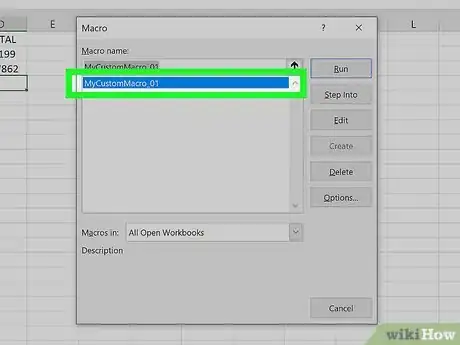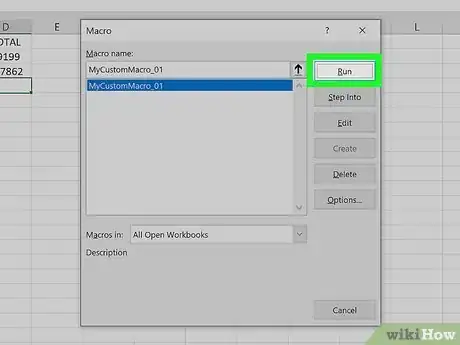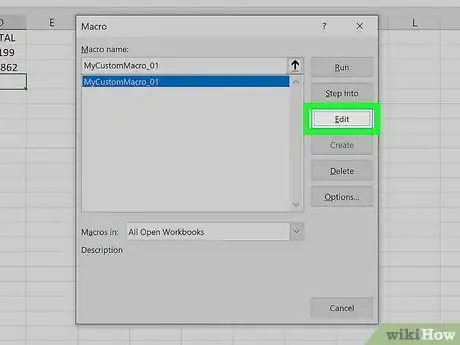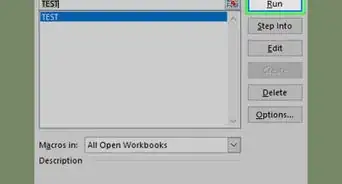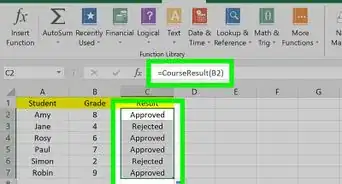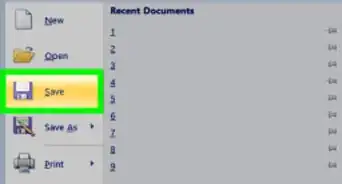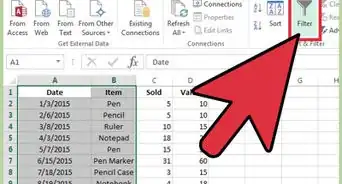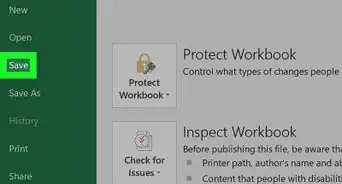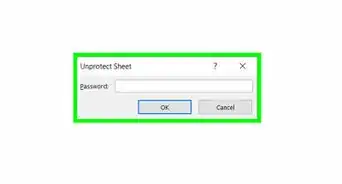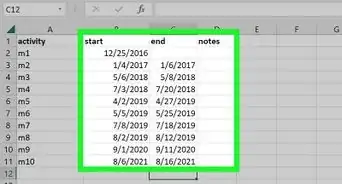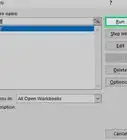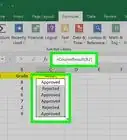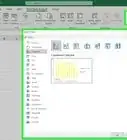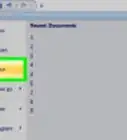This article was co-authored by wikiHow staff writer, Darlene Antonelli, MA. Darlene Antonelli is a Technology Writer and Editor for wikiHow. Darlene has experience teaching college courses, writing technology-related articles, and working hands-on in the technology field. She earned an MA in Writing from Rowan University in 2012 and wrote her thesis on online communities and the personalities curated in such communities.
The wikiHow Tech Team also followed the article's instructions and verified that they work.
This article has been viewed 1,597,539 times.
Learn more...
While Excel is full of time-saving features like keyboard shortcuts and templates, you can save even more time by creating macros to complete repetitive tasks. This wikiHow teaches how to create simple macros for Excel spreadsheets.
Steps
Enabling The Developer Tab
-
1Open Excel. The process for showing the Developer tab is the same for many versions of Excel for Windows. There is a slight difference for Excel for Mac, which will be detailed below.
-
2Click the File tab. It's in the editing ribbon above your document space.
- In Excel for Mac, click the "Excel" menu at the top of your screen.
Advertisement -
3Click Options. You might find this option at the bottom of the menu.
- In Excel for Mac, click the "Preferences" menu option.
-
4Click Customize Ribbon. It's in the panel on the left side of the window.
- In Excel for Mac, click "Ribbon & Toolbar" in the "Authoring" section.
-
5Check the box next to "Developer" to check it. You'll see this on the right side of the window under the header, "Main Tabs."
- In Excel for Mac, you'll see "Developer" in the "Tab or Group Title" list.
-
6Click OK. You'll see the Developer tab appear in your tab list.
Recording a Macro
-
1Click the Developer tab.You should see this in the editing ribbon above your editing space. If you don't see it, you need to enable it again.
-
2Click Record Macro. You'll find this in the Code section of the Developer tab. You can also press Alt+T+M+R to start a new macro (Windows only).
-
3Give the macro a name. Make sure that you'll be able to easily identify it, especially if you're going to be creating multiple macros.
- You can also add a description to explain what the macro will accomplish.
-
4Click the Shortcut key field. You can assign a keyboard shortcut to the macro to easily run it. This is optional.
-
5Press ⇧ Shift plus a letter. This will create a Ctrl+⇧ Shift+letter keyboard combination to start the macro. If you don't press Shift, then you run the risk of overwriting any keyboard shortcuts that already exist. For instance, if you entered z in the box without pressing Shift, you'd overwrite the "Undo" shortcut (which is Ctrl + Z)
- On Mac, this will be a ⌥ Opt+⌘ Command+letter combination.
-
6Click the Store macro in drop-down. More options will drop down for you.
-
7Click the location you want to save the macro. If you're only using the macro for your current spreadsheet, just leave it on "This Workbook." If you want the macro available for any spreadsheet you work on, select "Personal Macro Workbook."
-
8Click OK. Your macro will begin recording.
-
9Perform the commands you want to record. Pretty much anything you do will now be recorded and added to the macro. For example, if you run a sum formula of A2 and B2 in cell C7, running the macro in the future will always sum A2 and B2 and display the results in C7.
- Macros can get very complex, and you can even use them to open other Office programs. When the macro is recording, virtually everything you do in Excel is added to the macro.[1]
-
10Click Stop Recording when you're finished. This will end the macro recording and save it.
-
11Save your file in a macro-enabled format. In order to preserve your macros, you'll need to save your workbook as a special macro-enabled Excel format:
- Click the File menu and select Save.
- Click the File Type menu underneath the file name field.
- Click Excel Macro-Enabled Workbook.
Using a Macro
-
1Open your macro-enabled workbook file. If you have closed your file before running your macro, you'll be prompted to enable the content.
-
2Click Enable Content. This appears at the top of the Excel spreadsheet in a Security Warning bar whenever a macro-enabled workbook is opened. Since it's your own file, you can trust it, but be very careful opening macro-enabled files from any other source.
-
3Press your macro shortcut (if you want to use a shortcut key). When you want to use your macro, you can quickly run it by pressing the shortcut you created for it.
-
4Click the Macros button in the Developer tab (if you want to use the menu). This will display all of the macros that are available in your current spreadsheet.
-
5Click the macro you want to run.
-
6Click the Run button (if you have custom buttons enabled). The macro will be run in your current cell or selection.
- If you don't have custom buttons enabled, you can go to Customize Ribbon and add it there.[2]
-
7View a macro's code. If you want to learn more about how macro coding works, you can open the code of any macro you've created and tinker with it:
- Click the Macros button in the Developer tab.
- Click the macro you want to view.
- Click the Edit button.
- View your macro code in the Visual Basic code editing window.
Community Q&A
-
QuestionIf I have two lines of dates in one cell, how do I delete the first line?
 Community AnswerDouble click on the cell, or click the cell and then F2. Then, delete the part that you don't need. If you want to do this on a large number of cells on the same column, then select the column, click "DATA" on the top menu, click on "Text to Columns," and try the different options to divide the data there. (There are too many to list here.) You can divide by commas, spaces, dashes, periods, etc., or specify the length. Make sure the columns on the right are empty; the divided data will split into those columns.
Community AnswerDouble click on the cell, or click the cell and then F2. Then, delete the part that you don't need. If you want to do this on a large number of cells on the same column, then select the column, click "DATA" on the top menu, click on "Text to Columns," and try the different options to divide the data there. (There are too many to list here.) You can divide by commas, spaces, dashes, periods, etc., or specify the length. Make sure the columns on the right are empty; the divided data will split into those columns. -
QuestionWhile recording a macro, will it record something I want done outside of Excel, such as opening up a website and clicking on things in that website?
 Community AnswerNo. The macro program in Excel is limited to Excel. Once you use an outside program, Excel will be unable to record what you are doing.
Community AnswerNo. The macro program in Excel is limited to Excel. Once you use an outside program, Excel will be unable to record what you are doing. -
QuestionHow do I secure files in Excel?
 Community AnswerClick the Microsoft Office button, point to Prepare, and then click Encrypt Document. In the Password box, type a password, and then click OK. In the Reenter Password box, type the password again, and then click OK. To save the password, save the file.
Community AnswerClick the Microsoft Office button, point to Prepare, and then click Encrypt Document. In the Password box, type a password, and then click OK. In the Reenter Password box, type the password again, and then click OK. To save the password, save the file.
References
About This Article
1. Enable macros.
2. Click the Developer tab.
3. Click Record Macro.
4. Name the macro.
5. Specify a shortcut key.
6. Select This Workbook under “Store macro in.”
7. Click OK.
8. Perform the commands you want to record.
9. Click Stop Recording when finished.
10. Save the file as a Macro-Enabled Workbook (*.xlsm).
